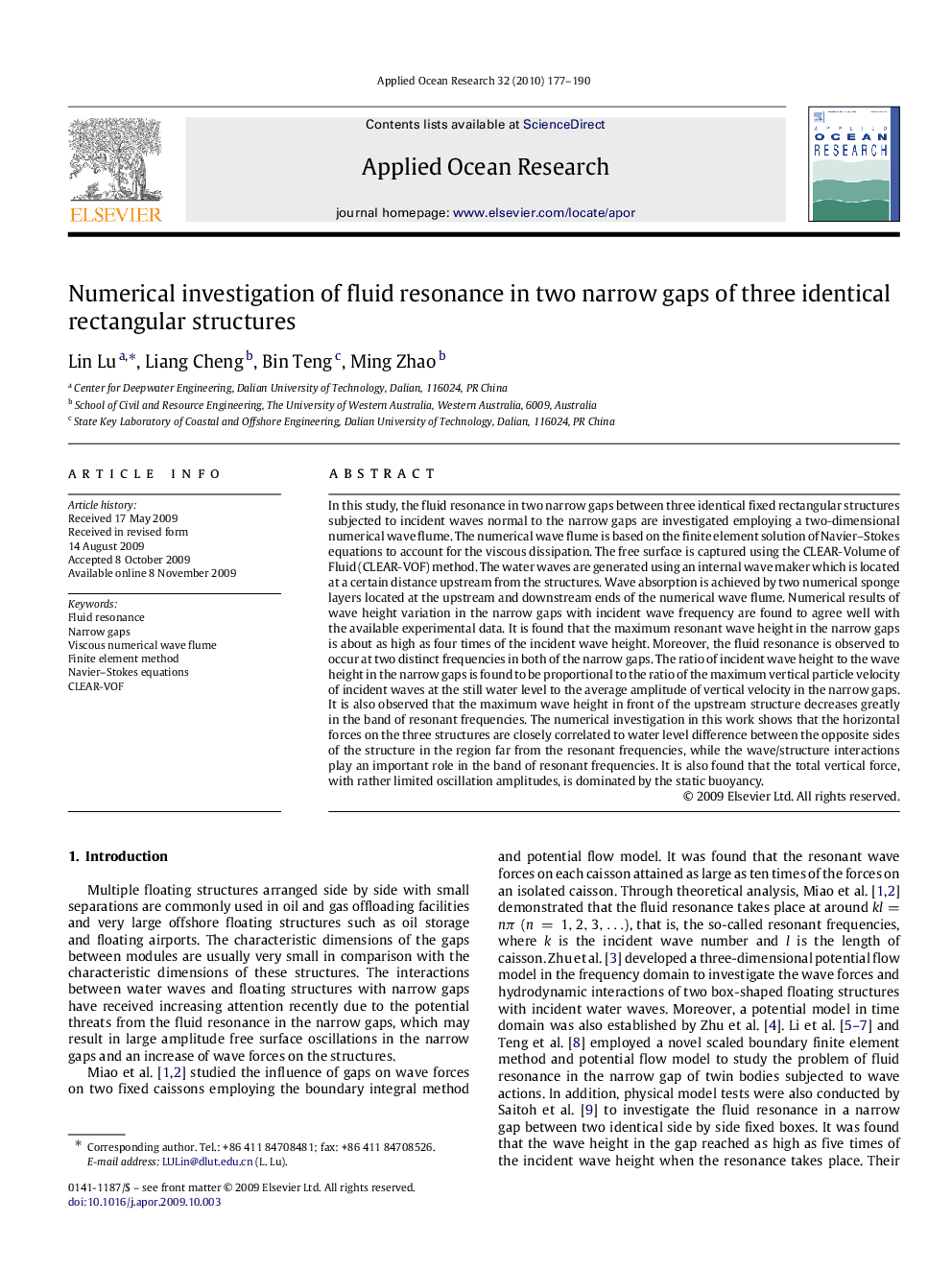| Article ID | Journal | Published Year | Pages | File Type |
|---|---|---|---|---|
| 1720196 | Applied Ocean Research | 2010 | 14 Pages |
In this study, the fluid resonance in two narrow gaps between three identical fixed rectangular structures subjected to incident waves normal to the narrow gaps are investigated employing a two-dimensional numerical wave flume. The numerical wave flume is based on the finite element solution of Navier–Stokes equations to account for the viscous dissipation. The free surface is captured using the CLEAR-Volume of Fluid (CLEAR-VOF) method. The water waves are generated using an internal wave maker which is located at a certain distance upstream from the structures. Wave absorption is achieved by two numerical sponge layers located at the upstream and downstream ends of the numerical wave flume. Numerical results of wave height variation in the narrow gaps with incident wave frequency are found to agree well with the available experimental data. It is found that the maximum resonant wave height in the narrow gaps is about as high as four times of the incident wave height. Moreover, the fluid resonance is observed to occur at two distinct frequencies in both of the narrow gaps. The ratio of incident wave height to the wave height in the narrow gaps is found to be proportional to the ratio of the maximum vertical particle velocity of incident waves at the still water level to the average amplitude of vertical velocity in the narrow gaps. It is also observed that the maximum wave height in front of the upstream structure decreases greatly in the band of resonant frequencies. The numerical investigation in this work shows that the horizontal forces on the three structures are closely correlated to water level difference between the opposite sides of the structure in the region far from the resonant frequencies, while the wave/structure interactions play an important role in the band of resonant frequencies. It is also found that the total vertical force, with rather limited oscillation amplitudes, is dominated by the static buoyancy.
